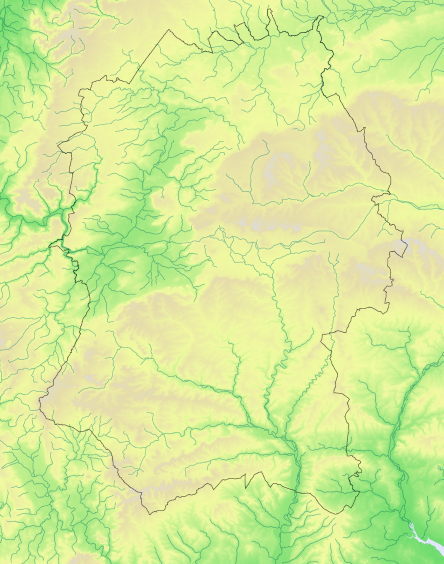Chiffchaff Phylloscopus collybita
Winter abundance 1995–2000
Common in summer, scarce in winter, winters west and south Europe/Africa
Atlas species lists
- Breeding distribution 1995–2000
- Summer abundance 1995–2000
- Winter distribution 1995–2000
- Winter abundance 1995–2000
- Breeding distribution 2007–2012
- Summer abundance 2007–2012
- Winter distribution 2007–2012
- Winter abundance 2007–2012
- Breeding distribution change
- Summer abundance change
- Winter distribution change
- Winter abundance change
More Chiffchaff maps
- Breeding distribution 1995–2000
- Summer abundance 1995–2000
- Winter distribution 1995–2000
- Winter abundance 1995–2000
- Breeding distribution 2007–2012
- Summer abundance 2007–2012
- Winter distribution 2007–2012
- Winter abundance 2007–2012
- Breeding distribution change
- Summer abundance change
- Winter distribution change
- Winter abundance change
More maps for this atlas
Map explanation
This map shows the winter relative abundance of the species in Wiltshire, based on variation from the average, as revealed by the fieldwork for Birds of Wiltshire (Wiltshire Ornithological Society 2007).
Key
Relative to average
Nos tetrads

>50% fewer
0
0%

25-50% fewer
0
0%

Average +/- 25%
15
3%

25-100% more
3
1%

>100% more
1
<1%
Total
19
4%

Not surveyed
Chiffchaffs breed from western Europe east across Eurasia to Siberia. They mostly winter in western and southern Europe, North Africa, the Middle East, the northern Indian sub-continent and sub-Saharan Africa from Senegal to Ethiopia, Somalia, Kenya and Tanzania. The majority of the British breeding population moves south in winter, to southern Europe, North Africa and Senegal, though increasing numbers are also being recorded in Britain at this season. Ringing evidence suggests that these are a mixture of over-wintering local breeders and winter migrants from continental Europe that, with warmer winters, are choosing to move west rather than south.
In the breeding season Bird Atlas 2007-2011 recorded Chiffchaffs present in 84% of 10km squares in Great Britain - an increase of 20% since the 1968-72 Breeding Atlas. They were absent only from upland areas in Scotland and northern England. In winter Bird Atlas 2007-2011 had them in 42% of squares - an 85% increase since the 1981-84 Winter Atlas.
In Wiltshire Birds of Wiltshire recorded them in the breeding season in 804 tetrads, with breeding confirmed or probable in 544. They were absent only from Salisbury Plain and some parts of the Marlborough Downs. WTA2 revealed that the number of occupied tetrads in summer had increased to 849 though the number in which breeding was recorded fell to 475 - a 13% reduction. In winter there was a marked increase in the proportion of tetrads in which Chiffchaffs were recorded, from 4% of all tetrads surveyed in Birds of Wiltshire to 11% in WTA2.
References
The following references are used throughout these species’ accounts, in the abbreviated form given in quotation marks:
“1968-72 Breeding Atlas” – Sharrack, J.T.R. 1976: The Atlas of Breeding Birds in Britain and Ireland. T. & A. Poyser
“1981-84 Winter Atlas” – Lack, P.C. 1986: The Atlas of Wintering Birds in Britain and Ireland. T. & A. Poyser
“1988-91 Breeding Atlas” – Gibbons, D.W., Reid, J.B. & Chapman, R.A. 1993: The New Atlas of Breeding Birds in Britain and Ireland 1988-91. T. & A. Poyser
“Birds of Wiltshire” – Ferguson-Lees, I.J. et al. 2007: Birds of Wiltshire, published by the tetrad atlas group of the Wiltshire Ornithological Society after mapping fieldwork 1995-2000. Wiltshire Ornithological Society.
“Bird Atlas 2007-2011”-– Balmer, D.E., Gillings, S., Caffrey, B.J., Swann, R.L., Downie, I.S. and Fuller, R.J. 2013: The Breeding and Wintering Birds of Britain and Ireland. BTO Books.
“WTA2” – ("Wiltshire Tetrad Atlas 2 ") the present electronic publication, bringing together the Wiltshire data from “Birds of Wiltshire” and “Bird Atlas 2007-11”, together with data from further fieldwork carried out in 2011 and 2012.
"Hobby" - the annual bird report of the Wiltshire Ornithological Society.

